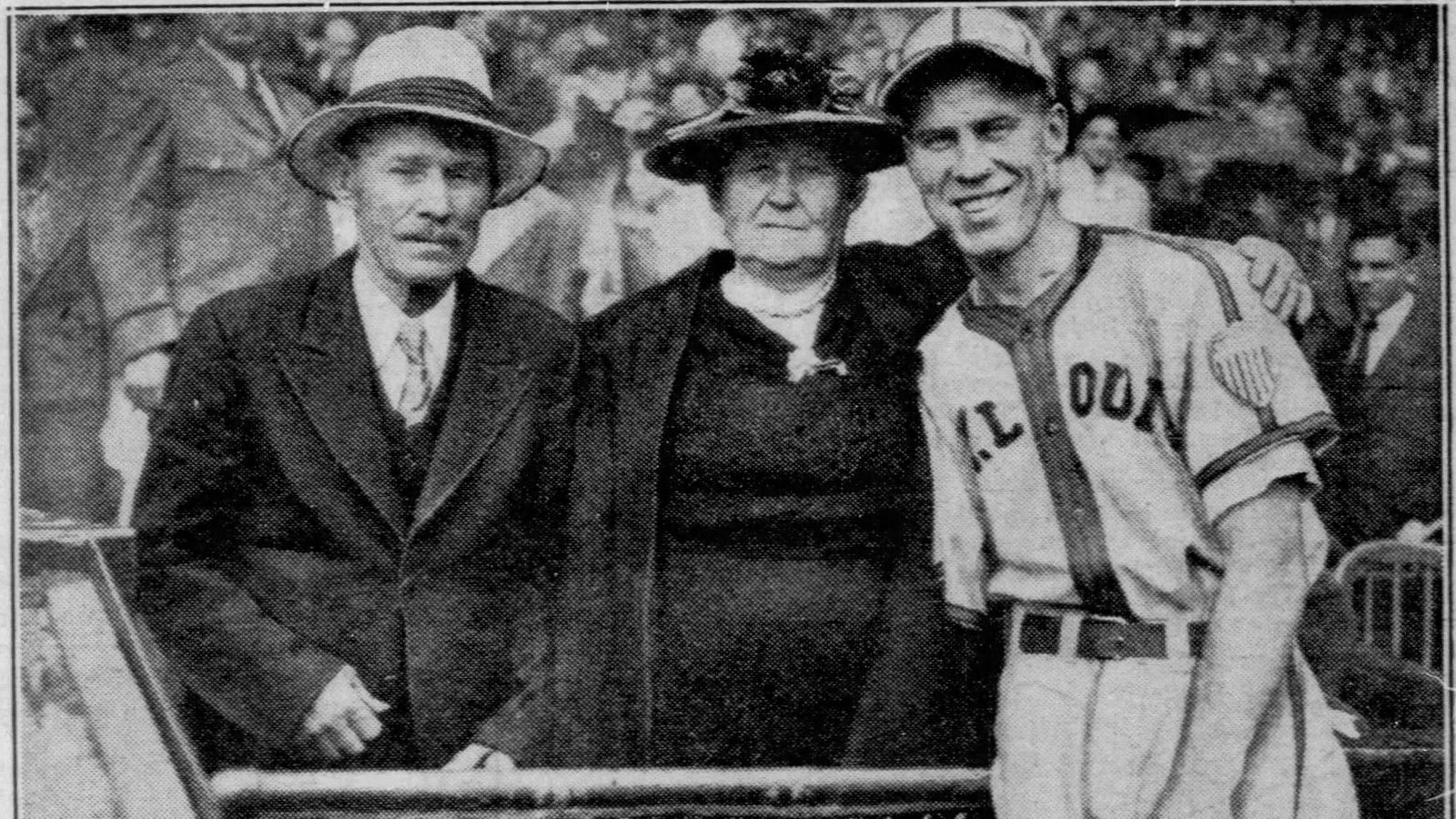
'One-armed wonder': 75 years ago, Pete Gray inspired MLB fans
Pete Gray was far from an All-Star, but you'd be hard-pressed to find a better feel-good story. There aren't enough of those in today's sports climate, so let's take a trip back 75 years for some positive energy.
A left-handed hitter with excellent speed, Gray debuted for the St. Louis Browns in April 1945. The 30-year-old outfielder stood 6-foot-1 and had an athletic frame. But one aspect of his physique was sure to immediately draw attention: Gray was missing his right arm.
He suffered a severe injury in a childhood accident — it's believed he fell off a wagon and got his arm stuck in the spokes -- and the limb was amputated. Despite the enormous obstacle, he fell in love with baseball and eventually taught himself to play with one arm, something that led him all the way to the big leagues.
His presence on the Browns' Opening Day roster was not exactly received well by the club's veterans. St. Louis entered the season as the reigning American League champions, although attendance was a touchy subject with ownership. The Browns had trouble drawing fans away from the crosstown Cardinals — who defeated them in the '44 World Series — and they were looking for a way to get more fannies in the seats.
Enter Gray, who was called a "one-armed wonder" by sports writers.
Despite being a .300+ minor league hitter, his big league promotion was immediately spun as nothing more than a publicity stunt, and he was shunned by some teammates. But that May, the Browns sure were happy to have him on their side against the Yankees.
In a doubleheader at Sportsmen's Park in St. Louis, Gray was a star. In Game 1, he went 3-for-5 with two RBI and a run as lead-off hitter, as St. Louis routed New York, 10-1. In Game 2, he added another hit and scored the winning run as the Browns won, 5-2, completing a four-game series sweep.
A week later, Gray fulfilled a dream, playing in Yankee Stadium for the first time. His parents travelled from Nanticoke, Pa., to see their son play for the first time. Gray was the big drawing card -- nearly 39,000 fans attended the game on the dreary, overcast day.
Slumping at the plate, Gray didn't enter the first game until the seventh inning. Perhaps the "We want Gray!" chants from fans in the Bronx inspired Browns manager Luke Sewell to put him in the lineup.
"He couldn't make a move without drawing a cheer from the crowd," the United Press reported. "Obviously nervous as he stalked each batter in left field, he removed his glove countless times to stroke his head or hitch at his belt."
Gray went 0-3 with a walk in the first game, won by the Yankees in 14 innings, 10-9. In St. Louis' 3-1 loss in the second game, Gray singled to right as a pinch-hitter.
"If it hadn't been for this wet field," Browns owner Donald Barnes said, "he would have done much better. He was under great pressure with all of this big crowd and with his mother and dad there. But any impression that he isn't a big leaguer is strictly his own, because I know he is."
The next day, a photo of a smiling Gray and his serious-looking parents led the back page of the New York Daily News. "They're Proud of Pete," read the headline under the image.

The rest of Gray's season, at least statistically, did not go all that well. In 234 at-bats, he finished with a .218 batting average and eight extra-base hits. His biggest achievement was simply being on the field at all, and his perseverance became an inspirational story that resonated in baseball cities across the country that summer.
Gray himself didn't see what he was doing as anything worth celebrating. He famously said to his teammates that season, "Boys, I can't fight, and so there is no courage about me. Courage belongs on the battlefield not on the baseball diamond."
They were words that came from an emotional place for him, as he had been denied entry into the Army when he applied after the Japanese bombed Pearl Harbor in 1941. Gray told the recruiting officer who turned him down, "If I could teach myself how to play baseball with one arm, I sure as hell could handle a rifle."
Gray became an inspirational figure to military personnel during World War II, making trips to hospitals and rehab centers to speak with fellow amputees about not giving up and how to live a good life despite the misfortune.
The Browns decided not to bring Gray back in 1946, and while he spent the next four seasons playing minor league ball, he never did get another chance in the majors. His glove from the '45 season was donated to the Baseball Hall of Fame in Cooperstown.
Gray, who shunned public attention after his baseball career, died in Nanticoke on June 30, 2002. The state of the world is trying at the moment. Perhaps his remarkable story can inspire another generation of fans.
More must-reads:
- Dreamland: 2020 Would-Have-Been MLB All-Star teams
- Hello (sniff, sniff), NL DH. Goodbye, epic pitcher at-bats.
- The 'Active MLB strikeout leaders' quiz
Breaking News
Customize Your Newsletter
 +
+
Get the latest news and rumors, customized to your favorite sports and teams. Emailed daily. Always free!

